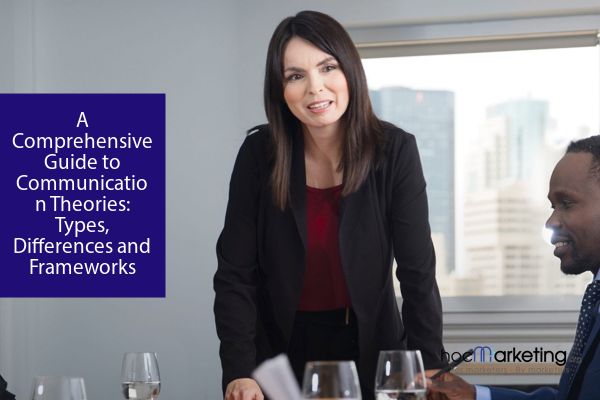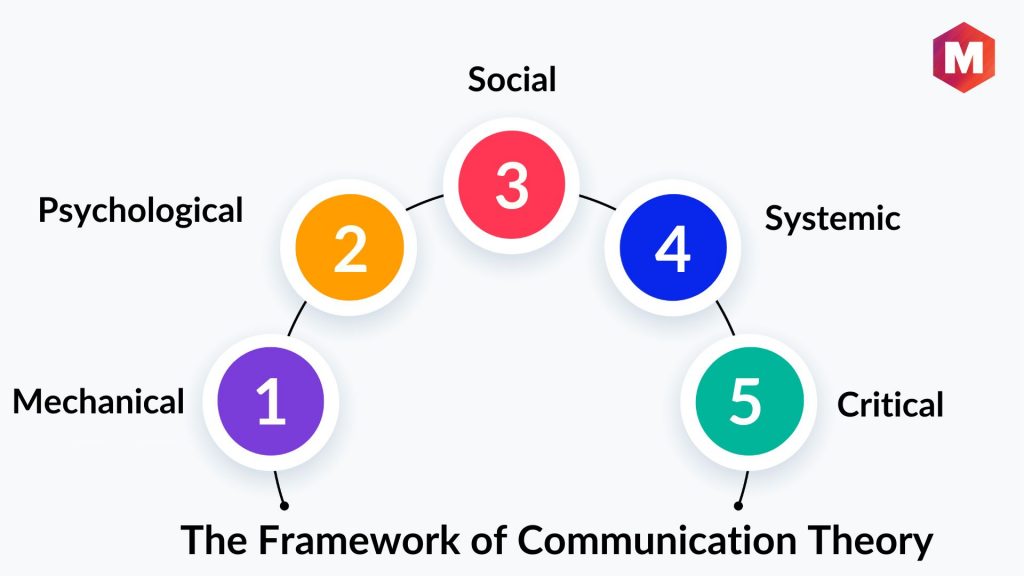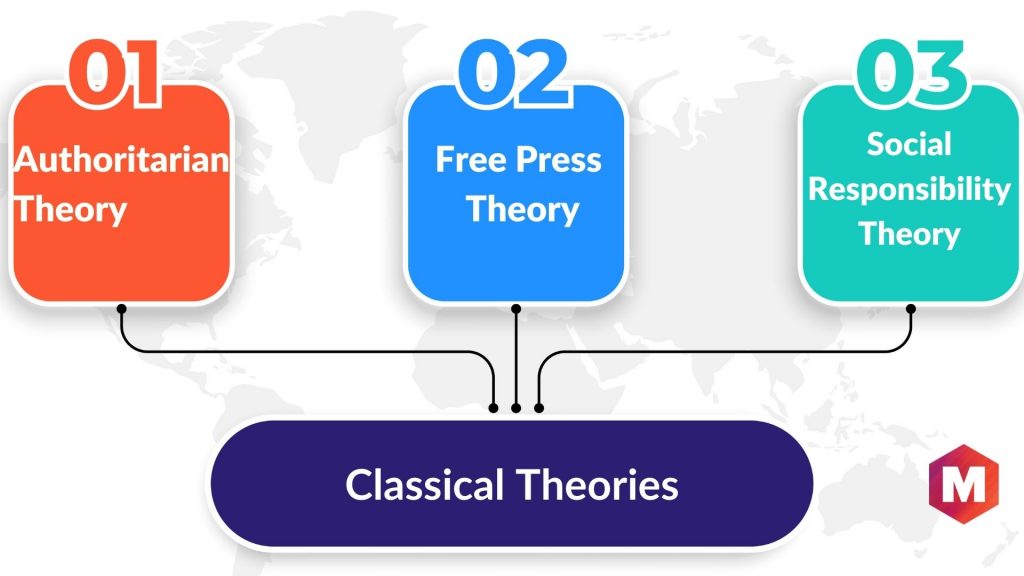
A Comprehensive Guide to Communication Theories: Types, Differences and Frameworks

Communication Theory is the study of how living beings communicate through various methods It encompasses a framework of Mechanical, Psychological, Social, Systemic, and Critical theories These theories include Classical, Communist, and Development Communication, among others The goal is to understand how communication affects society and individuals
The communication theory is a simple statement proposed by S. F. Scudder that all living beings communicate through different communication methods.
What is Communication Theory?
Living organisms communicate with others of their kind using a variety of methods. Animals use different sounds to communicate, while humans use words, letters, symbols, pictures, and gestures. Communication is essential for all living beings, as it allows us to interact with one another and without it, we would be like lifeless objects, devoid of movement and vitality.
The Framework of Communication Theory
The following are a few of the points of the communication theory framework.
1. Mechanical
Communication can be defined as a process that involves the transfer of information from a sender to a receiver. The sender is the point of origin, while the receiver is the point at which the communication is terminated. This mechanical process is well-established and has been studied extensively.
2. Psychological
Communication is often viewed as the transmission of feelings, thoughts, and information from the sender to the receiver. However, from a psychological perspective, communication is seen as a process that involves the sender and the receiver's ability to understand each other. This model also accounts for the receiver's reactions and attitudes after receiving and comprehending the message.
3. Social
Communication is a complex social process that involves the interaction of multiple individuals attempting to convey a message to another person. From a social perspective, effective communication is not solely dependent on the message being conveyed, but also how it is delivered. Both the content and delivery of a message are crucial components of successful communication.
4. Systemic
According to this perspective, communication is subjective and relies on the individual's interpretation of the messages received. The burden of comprehending the message lies solely on the receiver regardless of the sender's intended meaning.
5. Critical
This point of view says that communication is a medium in which a person can express himself, speak, or exert authority in a group of people.
Theories of Communication
1. Classical Theories
Authoritarian Theory
The origins of this theory can be traced back to Plato's authoritarian philosophy which advocated for a select group of individuals to hold power and manage the state. This philosophy also suggested that the mass media should adhere to the directives of the country, even if the state doesn't have direct control. Similarly, in Western Europe, the concept of freedom was limited to the ruling or upper class who sought to control speech in response to the emergence of the middle class.
Communication under authoritarian rule is characterized by the imposition of authority and censorship. Unsurprisingly, this has often led to the establishment of dictatorial regimes. The press, being a powerful tool of communication, has been subject to strict control, with the belief that the nation's interests must always take precedence.
Rewritten:
The Free Press Theory, also known as Libertarianism, is rooted in the principle of unrestricted expression. It gained momentum in the 17th century with the advent of the printing press, which made printing more affordable and accessible.
Government taxes were not welcomed by libertarian, and people’s opinion was prioritized over government decisions.
Social Responsibility Theory
The social responsibility theory emerged as a response to the criticisms levied against the free press theory. It was deemed necessary to update and reinvent the latter, which was considered outdated. In 1949, the social responsibility theory was born in America, with a focus on the media. This approach was necessary because it was discovered that only a select few were benefiting from libertarianism theory, while the majority were not. Various forms of media, such as radio and television, were held accountable through this theory.
This theory emphasizes the responsibility of the media towards society.
2. Communist Theory
Based on Karl Marx's research and ideologies, this theory posits that the doctrines of the ruling class are the dominant ideas. Lenin further developed this theory in the context of communism, advocating for control over freedom of the press and political science. Mass media was viewed as having the sole purpose of educating the public, rather than simply disseminating information. Its role was seen as promoting knowledge.
3. Development Communication Theory
According to the theory, communication is the key element for any sort of progress to take place. Without effective communication, development cannot be achieved.
According to development communication theory, the media has a crucial role to play in promoting the development of society. This theory emphasizes that the media should function as a tool for developmental programs. Any other function of the media would be insignificant in comparison to this goal. However, this theory was not supported by UNESCO, as it was seen as equating development with government propaganda.
4. Hypodermic Needle or Magic Bullet or Stimulus-response Theory
The theory of media power emerged in the midst of the first world war, highlighting the immense control and influence that mass media holds over its audience. Its premise was clear - the ability to shape public opinion and perception through targeted messaging was a formidable force to be reckoned with.
Selective exposure and selective perception are two primary factors that contribute to the influence of mass media on individuals, as supported by the hypodermic needle theory. Selective exposure refers to the tendency of individuals to limit their exposure to mass media, while selective perception and retention involve interpreting and remembering information from mass communication based on preconceived notions.
5. Standpoint Theory
Each individual is categorized within a specific social group, as per the standpoint theory, which suggests that everyone holds a unique rank within their respective group. This, in turn, shapes their perspectives and opinions based on their distinct experiences. Interestingly, those situated in the lower echelons of the social hierarchy often possess a deeper understanding of the social system compared to those occupying higher positions.
6. Actor-network Theory
The Actor-Network Theory (ANT) proposes that success in innovation and knowledge creation is dependent on both the human and nonhuman factors involved in the network. The theory emphasizes that both the actor and the network must be considered as equally responsible for achieving positive outcomes.
The Actor-network theory places its emphasis on the process of network formation, with subsequent attention given to exploring how these networks can lead to achieving success.
7. Adaptive Structuration Theory
The foundation of this theory lies in the creation of structures through the implementation of rules and regulations within groups and organizations. Once established, these structures manifest into stable social systems with their own distinct characteristics.
The decision-making process has a direct impact on these structures and can influence their evolution.
8. Cognitive Dissonance Theory
Cognitive dissonance refers to the mental discomfort that arises from holding conflicting beliefs or attitudes. An example of this could be a person who really likes a particular phone, but also feels that the product is overpriced. This internal conflict can create feelings of discomfort and may lead the person to reassess their beliefs or take actions to resolve the contradiction.
The idea suggests that individuals seek out beliefs that are harmonious and coherent. This is due to the desire to avoid experiencing cognitive dissonance, which results in individuals avoiding exposure to conflicting perspectives that challenge their existing beliefs.
9. Constructivism
Cognitively advanced individuals have an advantage in communication as they possess the ability to craft intricate messages that effectively convey their intended meaning. Additionally, they are adept at identifying and achieving multiple communication objectives simultaneously.
10. Confirmation Bias
People have unique perspectives and interpretations of the world around them. This is due to the fact that individuals selectively accept information that aligns with their existing beliefs while disregarding information that contradicts them.
11. Cultivation Theory
The prevailing belief today is that the media has a significant impact on an individual's perception of reality. As direct communication with every aspect of life is impossible, people rely heavily on mediated sources to gain knowledge and understanding. This means that the opinions and emotions one develops are shaped by the information they receive through these sources rather than through direct experience.
12. Face Negotiation Theory
The differences in conflicts between individualistic and collectivist cultures are highlighted in the face negotiation theory.
The individualistic approach emphasizes self-preservation and often involves adopting dominant styles of relationship and conflict. In contrast, collectivist cultures prioritize the group and tend to approach conflict in a way that integrates or avoids it altogether in order to maintain mutual respect and harmony.
13. Spiral of Silence Theory
The concept proposes that the media has the power to influence public opinion by publishing their own views. As a result, individuals may alter their beliefs in order to avoid being ostracized. Those who believe their opinions will be well-received are more likely to express themselves openly, while those who fear rejection may keep their thoughts to themselves. This group, referred to as minorities, may have their perspectives suppressed as a result.
14. Diffusion of Innovation Theory
The communication theory developed by Neil Gross and Bryce Ryan in 1943 emphasizes how ideas and concepts are disseminated through various channels to different individuals. It also outlines the various factors that impact individuals' perceptions and behaviors towards the original design or technology.
15. Theory of Planned Behavior
Perceived control plays a crucial role in shaping a person's intention to carry out a specific behavior or action, according to this theory. This element of judgment focuses on how easy or difficult people perceive the behavior to be. Social and personal factors also contribute to determining one's intentions.
16. Agenda-setting Theory
The agenda-setting theory proposes that the media has the power to influence what topics are deemed important and worthy of coverage in the news. It suggests that the media decides which stories are relevant and how much emphasis they should be given. This is demonstrated through the concept of salience transfer, which measures the media's ability to transfer the importance of a particular issue to the public.
17. Theory of Reasoned Action
According to this theory, a person's behavior is influenced by their intentions, which are shaped by personal judgment and social considerations. Personal judgment refers to how an individual perceives a particular action, while social concerns refer to what they believe others should do. These two elements are also present in the theory of planned behavior.
18. Media Dependency Theory
According to this perspective, individuals heavily rely on the media to fulfill their desires and achieve their objectives. The media is thought to influence and shape people's interests, needs, and motivations through various interaction channels.
The amount of dependency which is influenced depends on the number and centrality of the information.
19. Communication Accommodation Theory
People often adapt their communication style when interacting with others, as suggested by the communication accumulation theory. This adaptation can take the form of verbal or non-verbal changes, achieved through convergence or divergence. Convergence involves aligning one's communication style with that of the other person, often in an effort to seek social approval.
Divergence language, in contrast, is commonly employed to emphasize the distinctions within a particular group. It is often utilized by prominent ethnic individuals or groups with a strong sense of racial pride.
Conclusion
Communication theories play a crucial role in both human communication and society, as they often reflect the values and norms of the latter. The diversity of communication theories also highlights the various ways in which critical communication theories can be applied and adapted to different societal contexts.
NEXT
Communication Systems
PREV
Communication Plan
START
What is Communication










